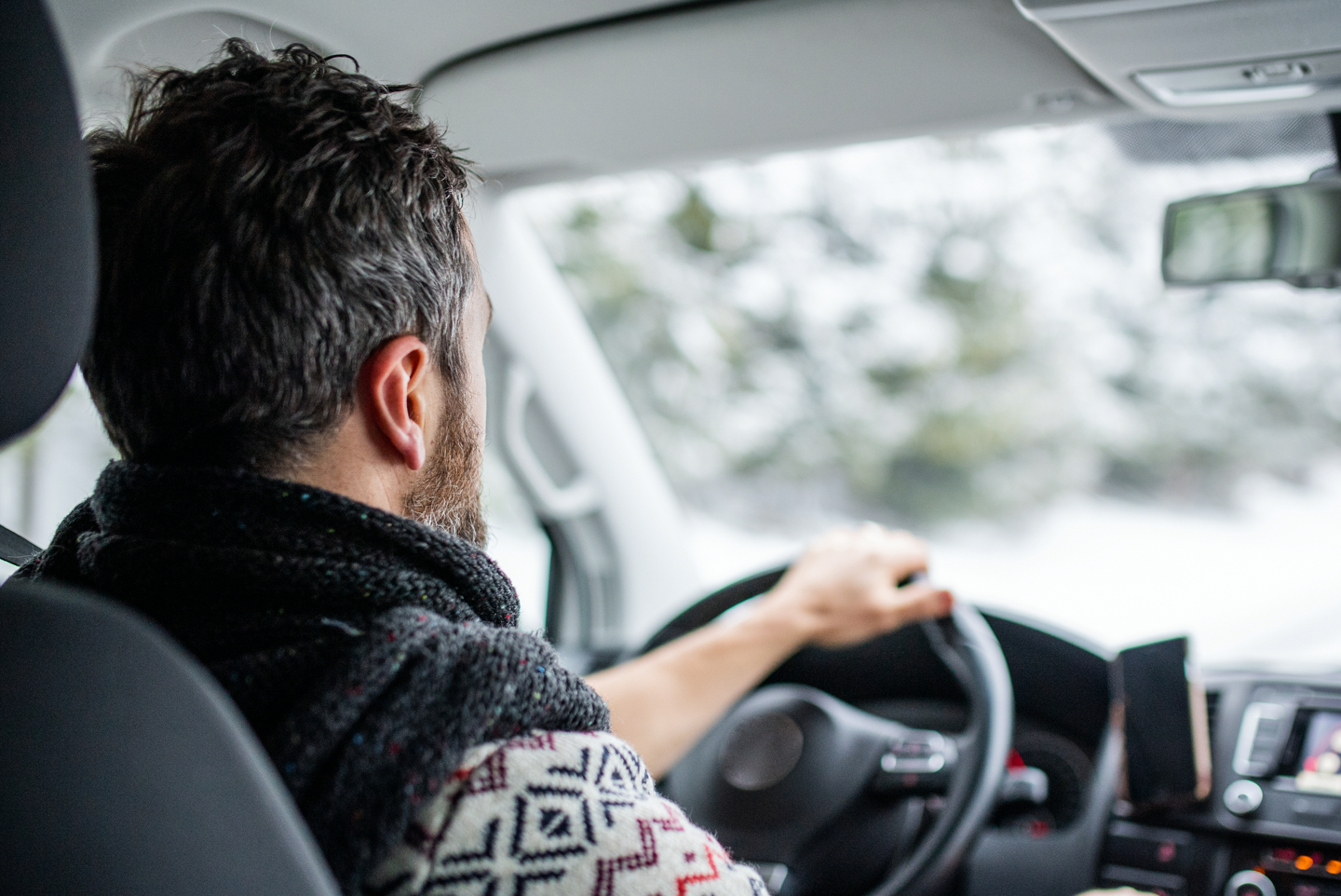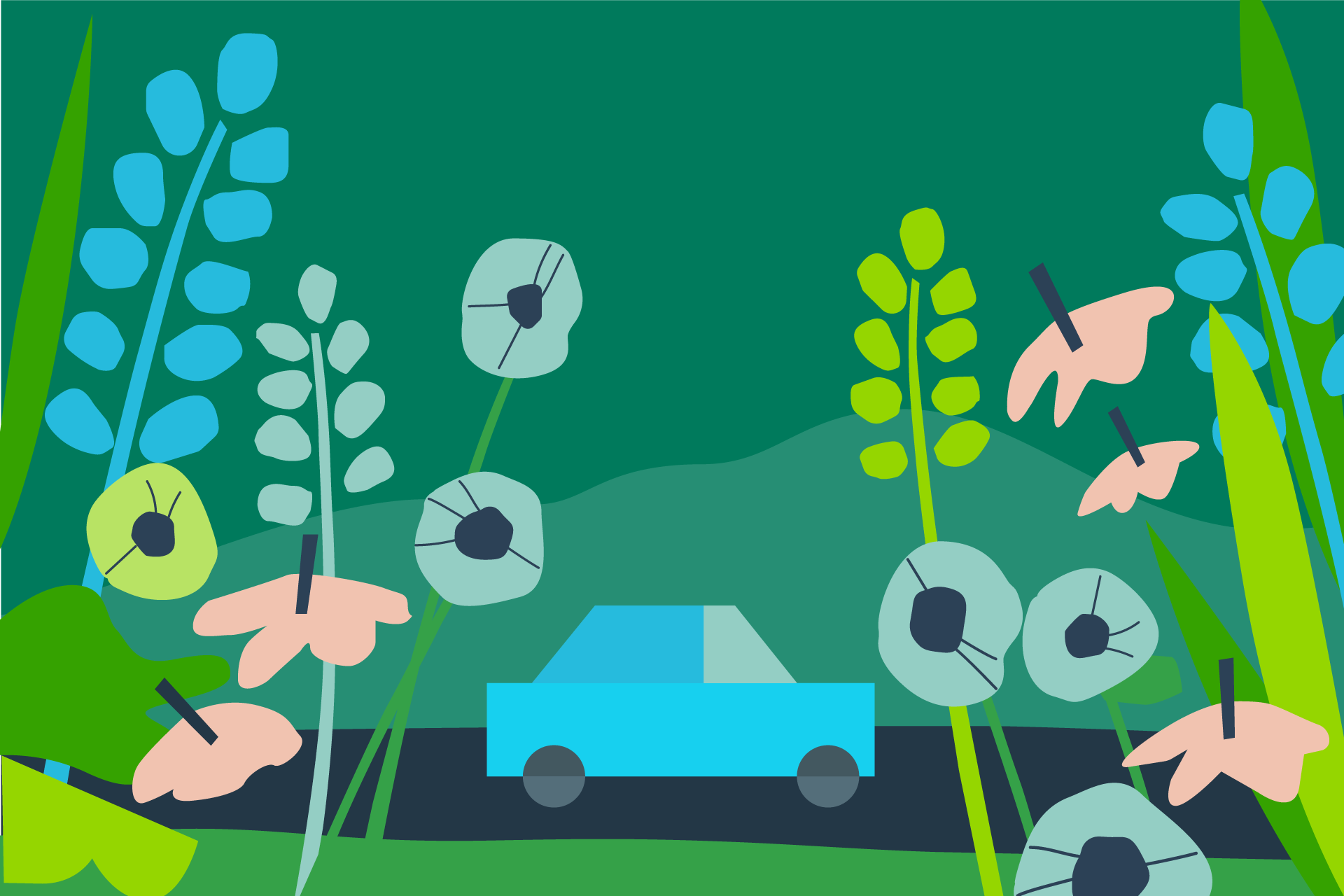For the thrifty driver: how to save on gas while driving
September 30, 2021
The
U.S. Energy Information Administration reported that in January of 2021 the average price of gasoline was $2.42 per gallon. And in March 2022, the average price was a surprising $4.32—a big jump from 2020’s annual average of $2.25 a gallon.For the trips you make to the grocery store, campus, preschool drop-off and date nights, that $3.26 can start to add up. You take the time to ask yourself: “Where do I absolutely have to drive this month?”, “Can I walk or bike?”, “Is there more I could be doing to save on gas?”
Now, to keep some money in your pocket—here’s how you can save at the pump.
Ways to save gas while driving
We provided you an assist by first addressing how you can save gas while on the road. Here’s a hint: these tips go hand-in-hand with our Driving Scores (Distraction Free, Smooth Driving, Safe Speeds and Driving Patterns).
Tip #1: Slow your roll
One great way to save gas is to slow down. Aggressive driving—braking hard, excessive speeding, evasive or erratic maneuvers—wastes gas, and wastes more than you think.
“It [aggressive driving] can lower your gas mileage by 15 to 30 percent at highway speeds and 10 to 40 percent in stop-and-go traffic.”
Devices and apps (like ours) that provide driver feedback can help you drive more efficiently. A study conducted by the Institute of Transportation Studies suggests that these driver feedback devices and apps can help the average driver improve their own fuel economy by about 3 percent and that using them can improve gas mileage by about 9 percent.
When you drive with our HiRoad insurance app, the technology in your smartphone measures your driving habits. So as you’re focusing on the positive and making good choices on the road, not only are you saving on your bill, you’re also maxing out your MPGs.
Tip #2: Stay idle-free
The good folks at the U.S. Department of Energy say that idling can use up to a half gallon of fuel per hour, depending on engine size and air conditioner (AC) use. What is idling? In the simplest of definitions, idling is running your car’s engine when you’re not driving it.
Prime examples are those times you arrive early to pick up your child at school and wait in line with the car on or when you are stuck waiting in line at a popular drive-thru. Nearly 6 billion gallons of fuel get wasted each year from idling, which generates around 30 million tons of CO₂—contributing to a harmful carbon footprint.
“Idling for more than 10 seconds uses more fuel and creates more CO₂ than turning off and restarting your engine.”
Sure, there are situations that make idling difficult to avoid. Like when you’re in traffic and need to keep your car running for safety reasons.
Tip #3: Use cruise control, when appropriate
One great way to save gas while driving on highways is to use cruise control on road trips or long distances to help maintain a constant speed. Reducing the number of times your vehicle slows down and accelerates on the highway helps keep the engine and transmission operating efficiently, resulting in a higher fuel economy.
According to Motor Trend, using cruise control on mostly level surfaces can help you save gas. However if you're traversing rolling hills, you may want to stick to an average speed and then allow your car to slow down (5 to 10 mph) when climbing and then allow it to gain a similar speed on the descent.
With these three tips, you can get started saving money on gas and improve your fuel economy. An added bonus is that you’re also benefiting the environment because you’re releasing fewer emissions into the air.
How to save gas by keeping your car in shape
Saving on gas goes beyond the miles you log on the road. Giving your car some much needed attention and care can go a long way in the savings department. Here are some tips for keeping your ride in shape.
First, keep tires properly inflated. This takes five minutes or less to check and adjust. By keeping your tires inflated to the correct pressure, you can improve your gas mileage by 0.6 percent. Not to mention, correctly inflated tires are safer and last longer.
HiRoad help: to find your proper tire pressure for your vehicle, locate the sticker on the driver's side door or the glove box and in your owner's manual.Second, use the recommended grade of motor oil. You can improve your gas mileage by 1 to 2 percent by using the manufacturer’s recommended grade of motor oil.
“For example, using 10W-30 motor oil in an engine designed to use 5W-30 can lower your gas mileage by 1 to 2 percent. Using 5W-30 in an engine designed for 5W-20 can lower your gas mileage by 1 to 1.5 percent.”
Third, remove excessive weight. When you keep unnecessary items out of your vehicle, you’ve not only found a way to save gas, but you’re also reducing the amount of distractions you have inside your vehicle. An extra 100 pounds in your car may result in a 1 percent MPG reduction. So as convenient as it is to keep your tools, strollers, coolers and strength equipment in the car—it may be time to find another place to store them.
Additional ways to save gas
One of the more obvious ways to save gas is by not driving at all. Walking, biking, riding public transportation (if available) are excellent ways to ditch your ride and try something new.
Is school nearby? Opt for walking or biking to and from class, instead of driving. Not only are you saving gas, but you're helping reduce your carbon footprint by being idle-free.
Is there a public transportation option that is close to your office? Not only is it a great way to avoid the morning commute and save gas, but it gives you the opportunity to read, meditate or listen to your favorite podcast.
With these tips on how to save gas, you now have a great place to start on your savings journey. To get good going and be rewarded for driving mindfully, think about joining HiRoad today.
The information in this article was obtained from various sources not associated with HiRoad®. While we believe it to be reliable and accurate, we do not warrant the accuracy or reliability of the information. HiRoad is not responsible for, and does not endorse or approve, either implicitly or explicitly, the content of any third party sites that might be hyperlinked from this page. The information is not intended to replace manuals, instructions or information provided by a manufacturer or the advice of a qualified professional, or to affect coverage under any applicable insurance policy. These suggestions are not a complete list of every loss control measure. HiRoad makes no guarantees of results from use of this information.
Stay on the path
Get HiRoad in your inbox
Share your email to get the latest about our community of mindful drivers.



